Side planks are a typical bodyweight exercise to work out your core. You can use the side plank variations to spice up your workouts.
While side planks are a typical choice to train core muscles like your obliques and abs, they are not the most exciting exercise out there.
One way to solve this issue is to do different side plank variations with extra movements and unusual stances.
These side plank variations are not always more challenging for your core muscles but they can definitely make your workouts more fun.
Most of these exercises work out one side at a time so don’t forget to do the same duration or number of repetitions on each side to avoid muscle imbalances.
1. Regular side plank
Since they are the starting point for most of the variations on this list, make sure you know how to do a regular side plank correctly.
For side planks you preferably want a yoga mat or other soft surface to make the exercise more comfortable for your elbows. To do a side plank take the following steps:
- Sit sideways on the ground leaning on one of your lower arms with the upper arm of that arm vertical to support your upper body.
- Walk away from your upper body with your feet until you can put your body in a straight side plank. Keep your shoulder right above your elbow.
- Hold this position for an extended period of time.
- Repeat the same duration on your other side.
The main attention point when doing a side plank is keeping your body straight. Do not lower your hips too much but don’t raise them too much either. Keep your neck in line with your body so don’t lower or elevate your head too much.

2. Knee/modified side plank
Next, there are knee side planks, also known as modified side planks. To do this variation you do a side plank while leaning on your bent knees instead of your feet.
This exercise is basically the most beginner-friendly side plank progression on the list. It is an easier version since less weight rests on your muscles.
If your oblique muscles are not yet strong enough for the exercises with a full side plank you can start with the modified version.

3. Side plank with staggered feet
A different issue people encounter when doing side planks is that their balance is not up for the challenge. To resolve this you can do side planks with staggered feet. This means with both feet on the ground.
Initially, you can put your feet far apart. As your balance gets better you can put your feet closer and closer until a regular side plank is within your capabilities.
4. Straight arm side plank
As the name implies, this next variation is basically a regular side plank but instead of leaning on your forearm, you lean on your hand and keep your arm slightly less than stretched.
The first difference this makes is comfort. Some people find leaning on their elbow uncomfortable. Especially when doing side planks on a hard surface this could be the case.
Additionally, your tricep muscles (back of the upper arm) have to work during the straight arm version. This is not the case during the regular side plank.
One thing to keep in mind is that straight arm side planks are generally less comfortable for your wrists.
5. Weighted side plank
Weighted side planks involve wearing or holding extra resistance close to your hips. Some examples of oblique workout equipment options you can use include a weighted vest, dumbbells, weight plate, etc.
By doing this you make the exercise harder on core muscles like your obliques. This allows you to see more oblique growth and strength progress for longer.
Increase the resistance you use in weighted side planks as you get stronger to keep seeing more and more progress.

6. Exercise ball side plank
An exercise ball, also known as a stability or yoga ball, is a soft elastic ball. You can use this piece of fitness equipment to do more unique exercise ball exercises or to modify existing exercises like the side plank.
The exercise ball side plank is usually done by leaning with your arms on the ball. Individuals more advanced when it comes to core and balance training can even try the variation with their feet on the ball instead.
7. Bosu Ball side plank
Bosu Balls are a different piece of fitness equipment. You can describe these as the top of a stability ball attached to a flat surface.
Similar to exercise balls you can use Bosu Balls both to do unique exercises or modify others like the side plank. You can put the Bosu Ball on both sides and put it under both your elbows or feet.
The variations with the Bosu Ball with the round part on the ground will generally be more challenging for balance and core muscles.
With the flat part on the ground, side planks are slightly more challenging for either your chest and shoulder muscles or your ankle muscles.
8. Side plank leg lift/hip abduction
For the leg lift version of the side plank you raise your upper leg. The concept is simple but the exercise can be challenging on your balance and muscles.
This sideways outward movement of your leg is also known as a hip abduction. The term is also used as another name for the same movement.
Side plank leg lifts are mostly more challenging for your outer thigh muscles and balance. To make the exercise even more challenging for these muscles you can loop a resistance band around your legs or wear ankle weights.

9. Side plank crunch
For the next variation you start in the regular side plank position. After that, you crunch your upper shoulder and upper hip towards each other. You can move your upper knee too.
Side plank crunches are slightly more challenging for your abs and obliques but only a small amount. The downside is that you can’t really add weights in a convenient way.

10. Side plank hip dips
As the name implies, to do side plank hip dips you lower and then raise your hips while you are in side plank position. This will make the exercise more challenging on your oblique and outer hip muscles.
The hip dip variation is actually one of the more effective exercises on this list for training your oblique muscles. Especially if you hold extra weight on your hips.
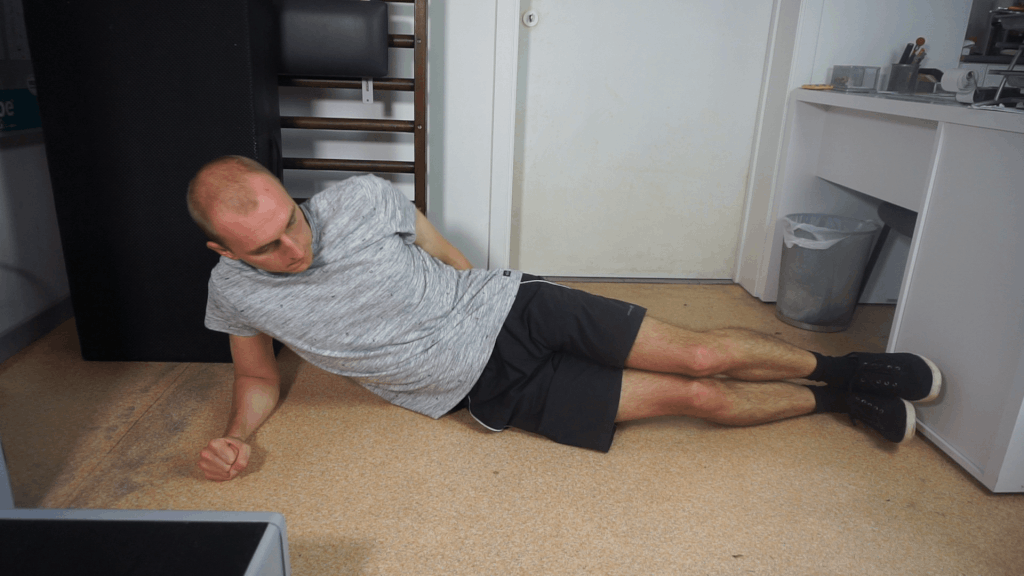
11. Side plank hip lifts
Side plank hip lifts are very similar to the previous option but instead of lowering your hips first, you lift them first. This will generally be the easiest version of the two.
That being said, side plank hip lifts can also be a great exercise for engaging your oblique and outer thigh muscles in a more dynamic way than a regular side plank.

12. Side plank rotation
During side plank rotations you reach under your body with your free arm. This engages additional oblique muscles responsible for rotation that generally don’t have to work as much during regular side planks.
Additionally, side plank rotations can offer you some balance, coordination, and flexibility training.

13. Plank rolls/alternating side planks
Planks rolls, also known as alternating side planks, are an exercise where you switch between a side plank on one side, a regular plank, and a side plank on your other side.
This exercise does look a bit more impressive than a regular side plank but for your core muscles, the exercise is not that much harder.
Even so, this variation can make your workout fun and focused on balance and coordination.
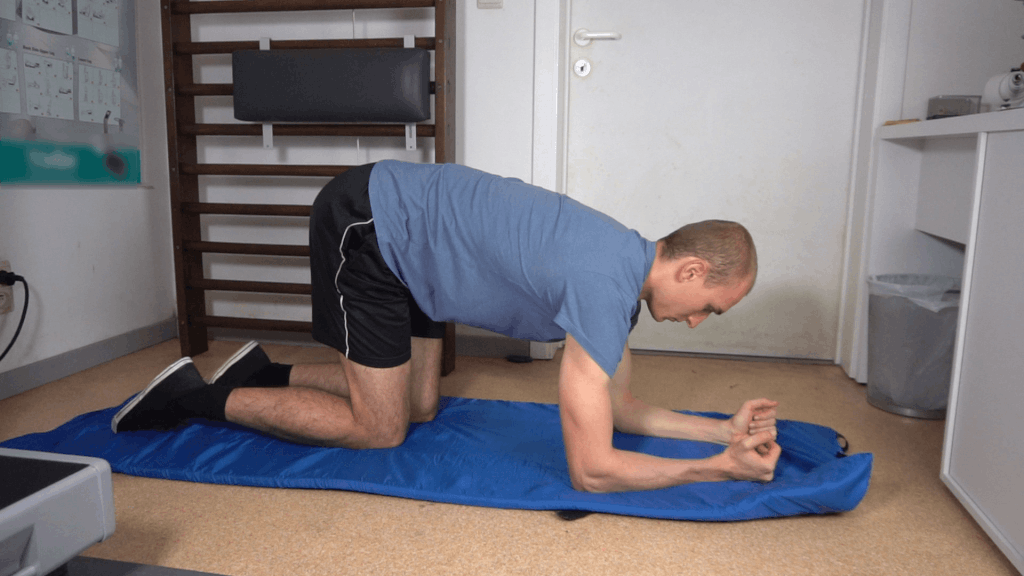
14. Side plank march
Side plank marches start in a side plank position with both feet on the ground and close to each other. After that, you basically do high knees in the side plank position.
This means raising one knee to the chest of that side while folding the leg. Then moving this leg back to starting position and repeating with the other leg.
Side plank marches engage your hip flexor and glute muscles slightly more but than the regular side plank. Even so, this variation is mostly for engaging your cardiovascular system just a bit more.
15. Side plank kick
Side plank kicks are similar to the previous option but instead of folding your legs, you keep them straight. This leads to more of a kicking motion than a high knee motion.
This is slightly more challenging when it comes to balance but mostly offers the same extra cardiovascular system engagement of side plank marches.
16. Star side plank
Star side planks are a variation of the straight arm side plank where you keep your upper leg and arm raised up in the air.
This mostly makes the exercise more challenging for your balance and outer thigh muscles but engages your shoulder and back muscles a tiny amount more too.
You can loop resistance bands around your legs, wear ankle weights, and/or hold a weight in your upper hand to make star side planks more challenging for your muscles.

17. Side plank with lateral raise
For this next exercise you likely need some weight to make movement challenging enough. Start in a side plank position and hold your slightly stretched free arm by your side. Your upper hand potentially holds some type of weight.
To do the actual exercise you then slowly raise your upper hand straight up until it is about vertical. After that, lower it back into starting position in a controlled motion.
Besides the core muscles of the regular side plank, you engage your deltoids (the main shoulder muscle) and more specifically the middle part during side plank lateral raises. Standing lateral raises will generally be better to train this muscle.
Even so, the extra arm movement can make the side plank more interesting and work more muscles.

18. Side plank with rear delt raise
You may deduce it from the names but this next side plank variation is similar to the previous option. The difference is the direction of the upward motion of your arm.
For this exercise your upper arm starts pointing forward. After that, you again raise your hand.
Side planks with rear delt raises still engage your deltoids on top of the regular side plank muscles. However, with this variation the rear deltoids (back part) are the main focus.
19. Side plank oblique twist
Side plank oblique twists are an exercise where you twist your upper body so your upper shoulder comes closer to the ground. It is very similar to side plank rotations but you don’t twist as far and don’t reach under your body.
Of the two exercises, the oblique twist is the easiest one. This makes it more beginner-friendly but also means it offers less training than side plank rotations.
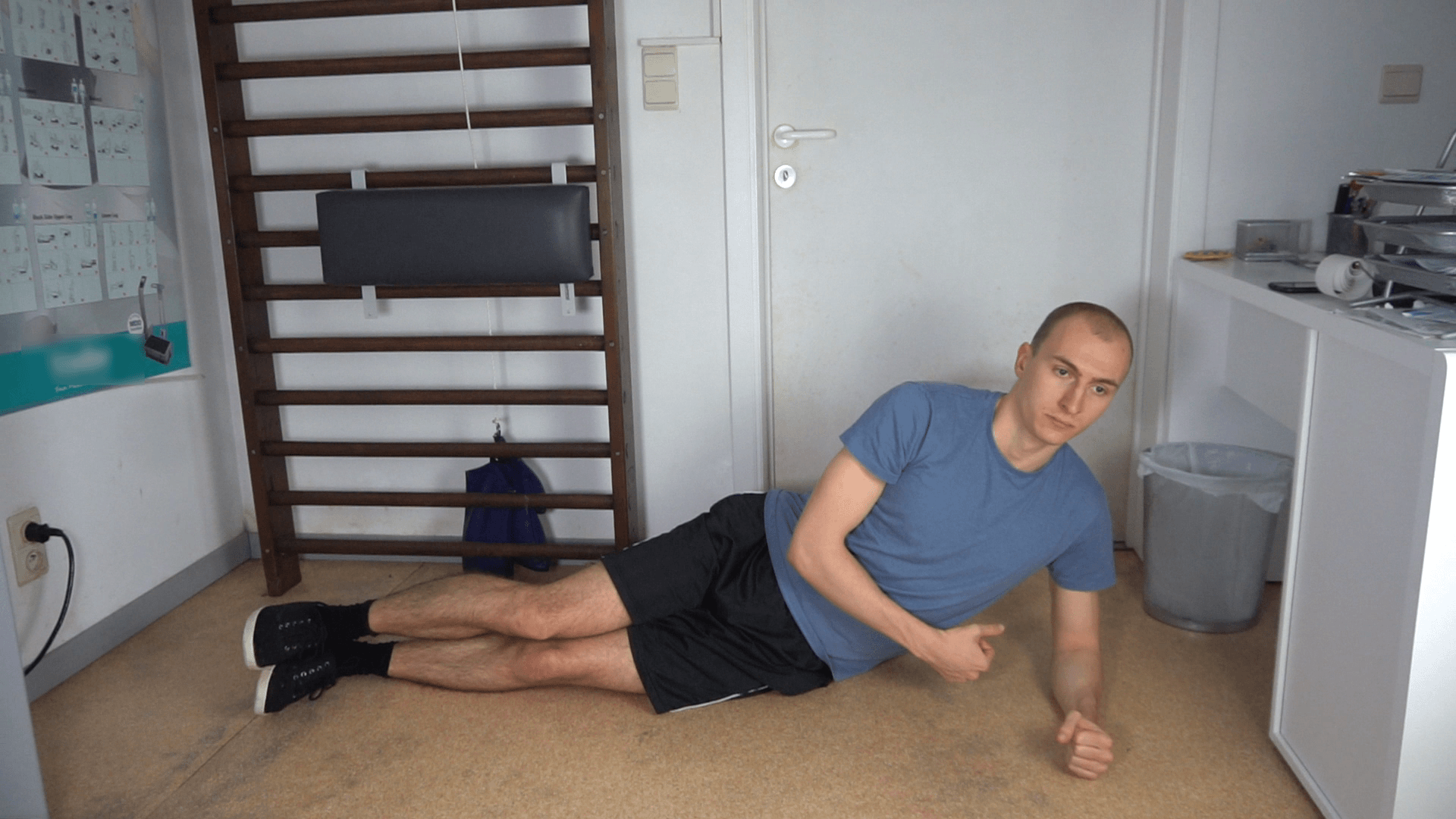
20. Adductor side plank
During adductor side planks you mainly rest on your upper leg. Your lower leg does the adduction movement. This is the opposite of abduction and means that your leg will go towards the middle.
In side plank position this means that your lower leg will go up.
This engages your hip adductor, inner thigh, muscles more compared to regular side planks. Both in your upper and lower leg.
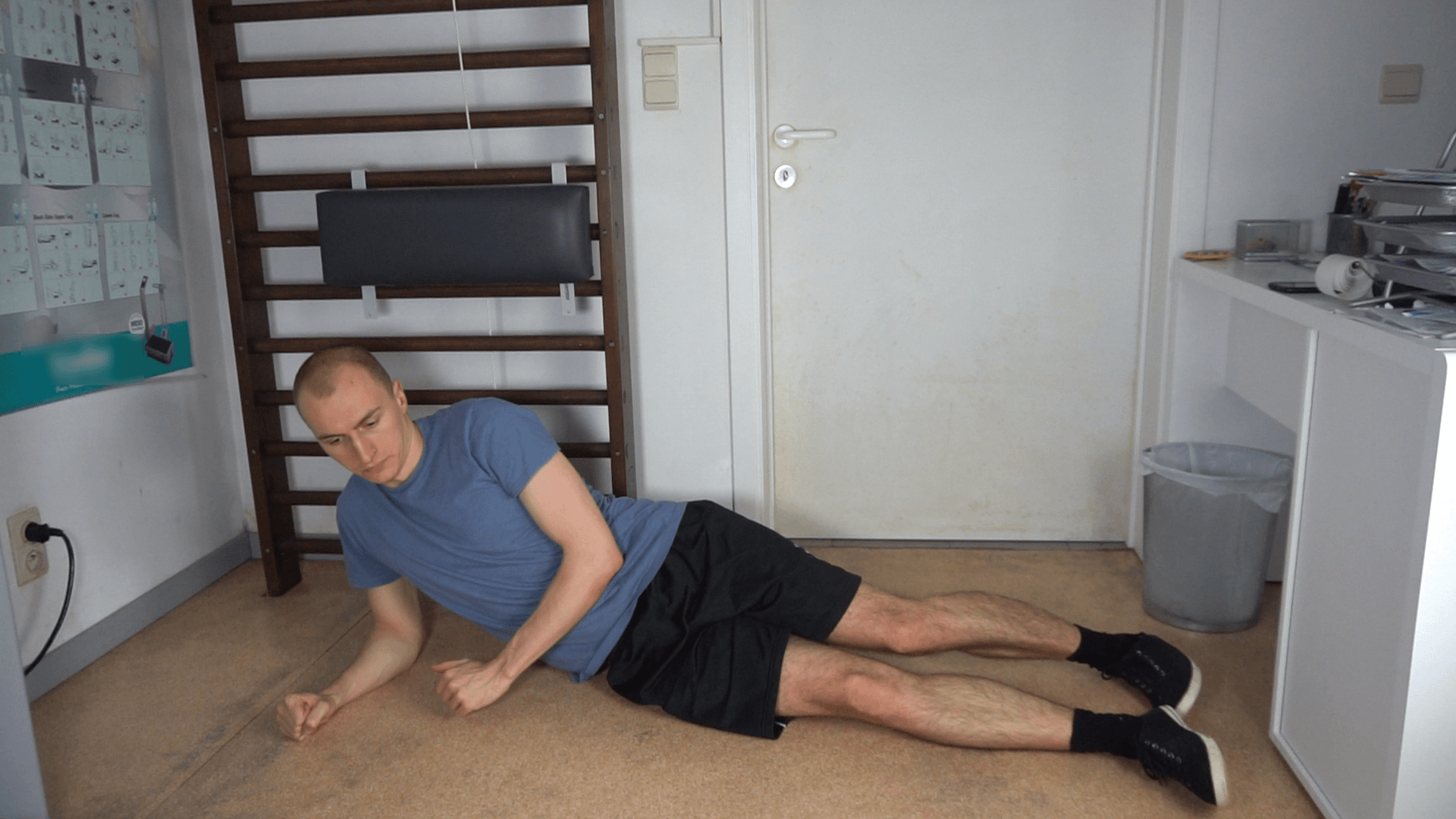
21. Side plank toe taps
During this next side plank variation you rest on your lower leg and tap with the foot of your upper leg in front and behind the lower foot.
This will make side plank toe taps mainly more challenging for your outer thigh muscles, balance, and coordination. Additionally, more challenging for your glutes, hip fleoxrs, and cardiovascular system to a certain extent.

22. Side plank bicycle crunch
Side plank bicycle crunches again require you to do a side plank where you mainly rest on your upper leg. After that, you raise your bottom knee towards your upper chest with the help of your core muscles.
Compared to a regular side plank this exercise is harder on your upper inner thigh muscles and core muscles like obliques and abs. Additionally, side plank bicycle crunches challenge your balance and coordination a nice amount.
23. Side plank side reach
Instead of really working additional muscles or regular side plank muscles more, this next variation takes advantage of the extra spare time to stretch your latissimus dorsi muscle.
To do side plank side reaches you reach over your head with your upper arm. This movement should make it so you feel the upper back muscle right below your upper arm stretching.

24. Feet elevated side plank
As the name implies this next exercise is the side plank exercise with your feet on an elevated surface instead of on the ground. Something as simple as a chair can be a suited object for this.
Feet elevated side planks are slightly more challenging for your oblique, outer thigh, upper back, and shoulder muscles.

25. Side plank with row
For this next exercise you need either resistance bands with a good anchor or a cable machine with a single-hand attachment.
Next, you hold the resistance band or cable machine handle with your upper arm slightly less than stretched and pointing forward while in the plank position.
After that, you pull your hand towards your body mainly with the help of your upper back muscles. Keep your elbow close to your side, not pointing upward.
Traditional row variations are usually done to train upper back and bicep muscles. Side plank rows are an exception.
Due to the row movement, the side plank becomes more challenging to hold for your oblique muscles which makes side plank rows a great core exercise.
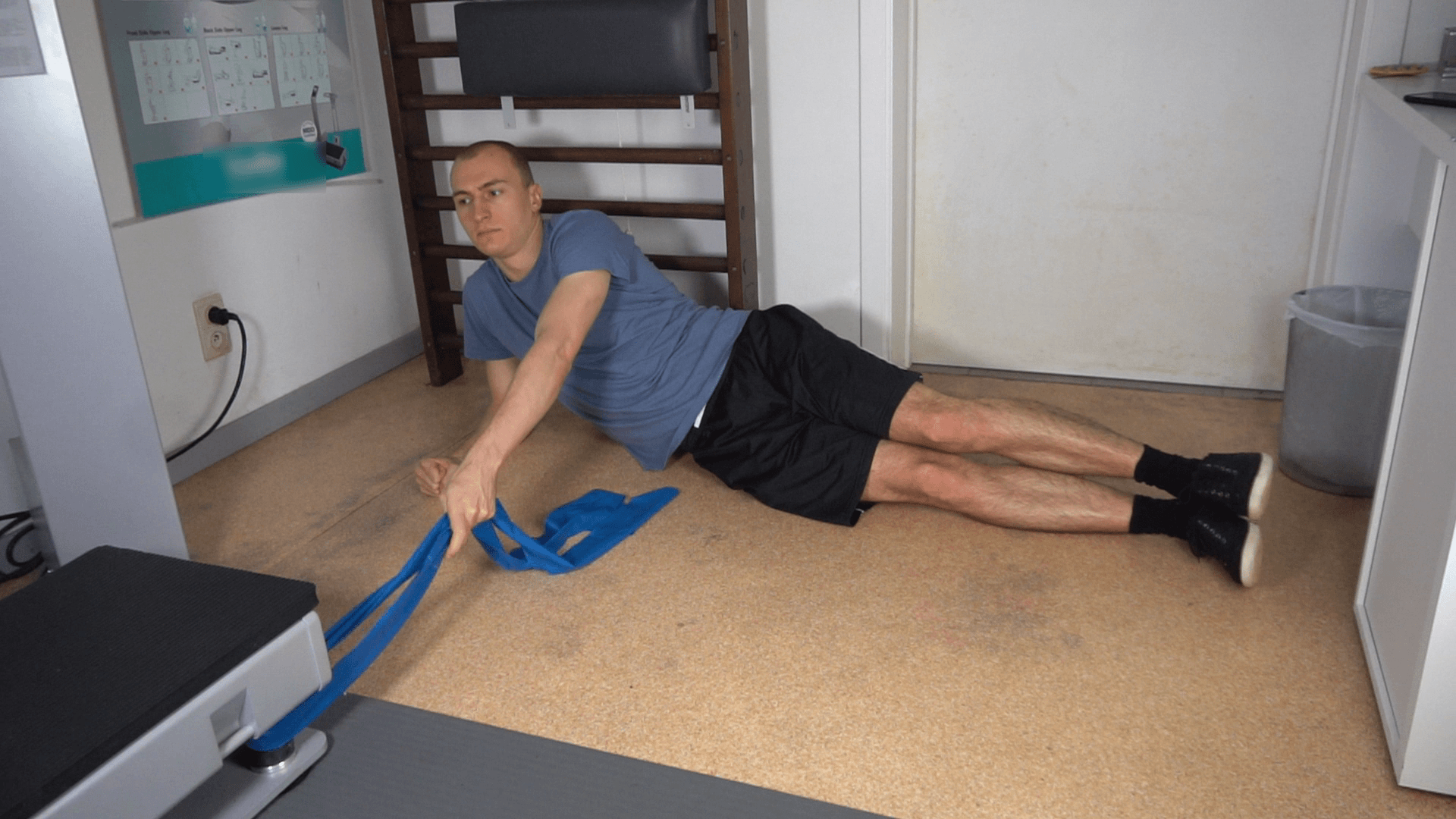
26. Side plank clamshell
For the side plank clamshell you start sitting sideways on the ground with your knees folded slightly and hips on the ground. After that, you raise your hips off the ground similar to a knee side plank.
At the same time, you do the clamshell exercise with your upper leg. This means raising the upper knee while keeping your upper foot on the other foot.
This leads to some extra glute engagement for the upper leg. However, side plank clamshells are not that effective for most people.
First of all, knee planks are not that challenging for your core muscles. Secondly, combining the two movements likely messes with your clamshell technique.
Side plank clamshells are generally not recommended for getting optimal exercise benefits in the shortest amount of time but it can be a fun way to switch up things.

27. Pushup to side plank
Again the name of this next exercise describes the movement well. You simply do a pushup, go into a side plank position on one side, do another pushup, and go into the side plank position on the other side.
From the words side plank in the name, you would expect that this exercise engages your oblique muscles a lot. However, if you only hold the side plank position for a second, pushup to side planks are more of a chest, tricep, and shoulder exercise.
Depending on your training goals you can also hold the side plank position for a bit. You can possibly combine this variation with some of the other options on this list.

28. Single leg side plank
Single leg side planks are a part of many of the other variations but you can also do this movement on its own. Leaning on your lower leg will engage the outer thigh and oblique muscles of that side more.
Removing your bottom leg off the ground and leaning on your upper leg will engage the inner thigh muscles of the top leg more.
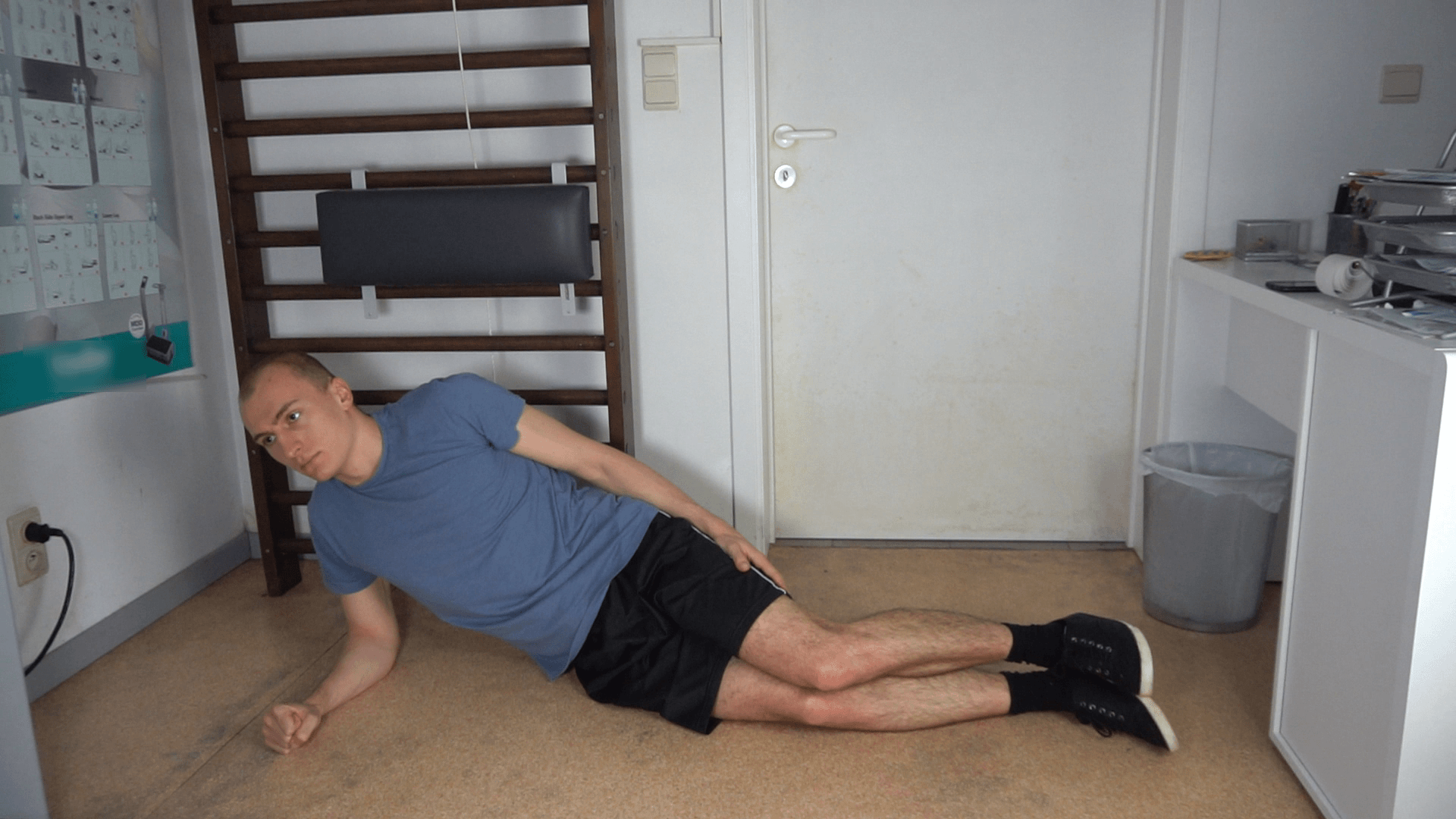
29. Side plank pulses
Side plank pulses are a combination of hip dips and lifts with a smaller range of motion.
This makes the side plank a bit more dynamic and more challenging for your muscles but only a tiny amount.
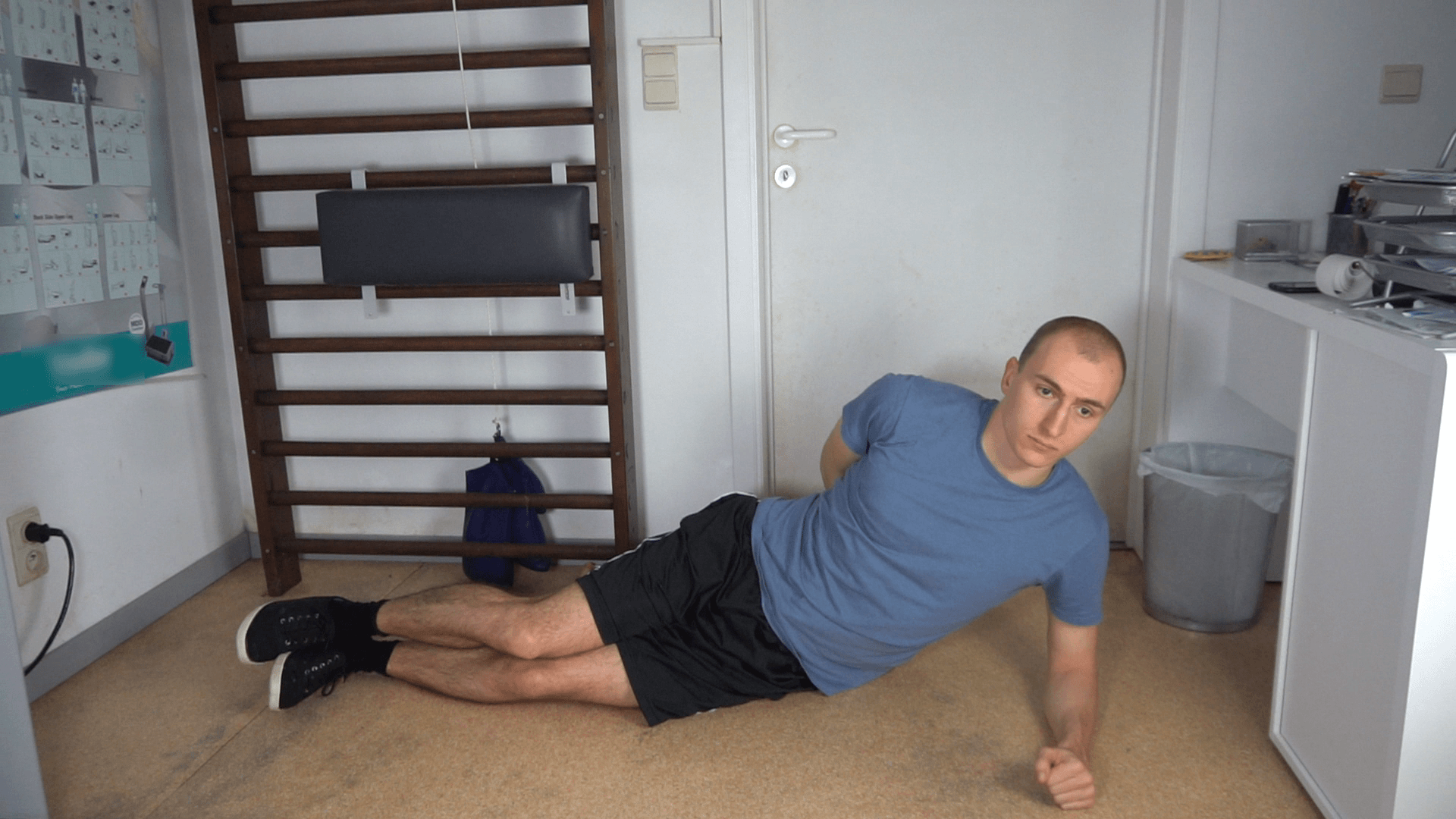
30. Copenhagen side plank
For this next side plank variation you again need an elevated object. Something like a sturdy chair is more than enough. After that, you will do a side plank with only your upper leg resting on the object.
Doing the Copenhagen version makes the side plank more challenging for the inner thigh muscles of your upper leg. Even more so than similar single leg side planks on the ground.

